Advanced Golang
Concurrency
Go runtime scheduler
In this article, we explore the intricacies of the Go Runtime Scheduler and how it efficiently manages Goroutines alongside operating system threads. We will examine the startup process of a Go program, the multiplexing of Goroutines, and the cooperative scheduling strategy that makes Go unique.
Starting a Go Program
When a Go program starts, the runtime creates a set of operating system threads equal to the number of logical CPUs available. The operating system handles the creation, blocking, and scheduling of these threads on CPU cores. You can determine the number of available logical processors using the runtime.NumCPU method. This method calculates the count by multiplying the number of physical cores by the number of hardware threads each core supports.
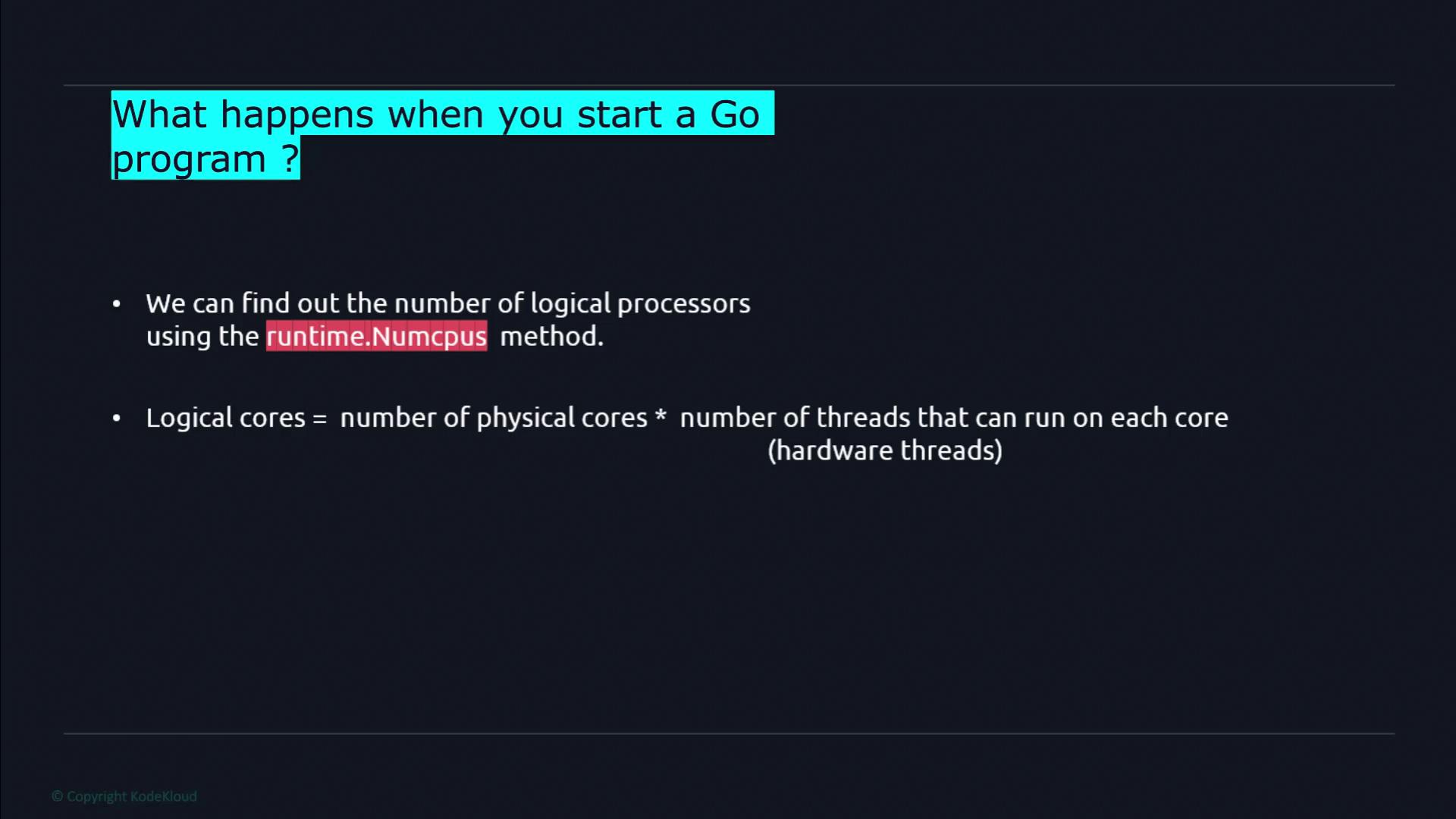
Calculating Logical Processors and Goroutine Multiplexing
Goroutines are lightweight application-level threads that execute independently. The Go runtime employs an M:N scheduling technique to multiplex many Goroutines over a limited number of operating system threads. This efficient model allows you to run an arbitrary number of Goroutines on a fixed pool of threads, ensuring optimal resource utilization.
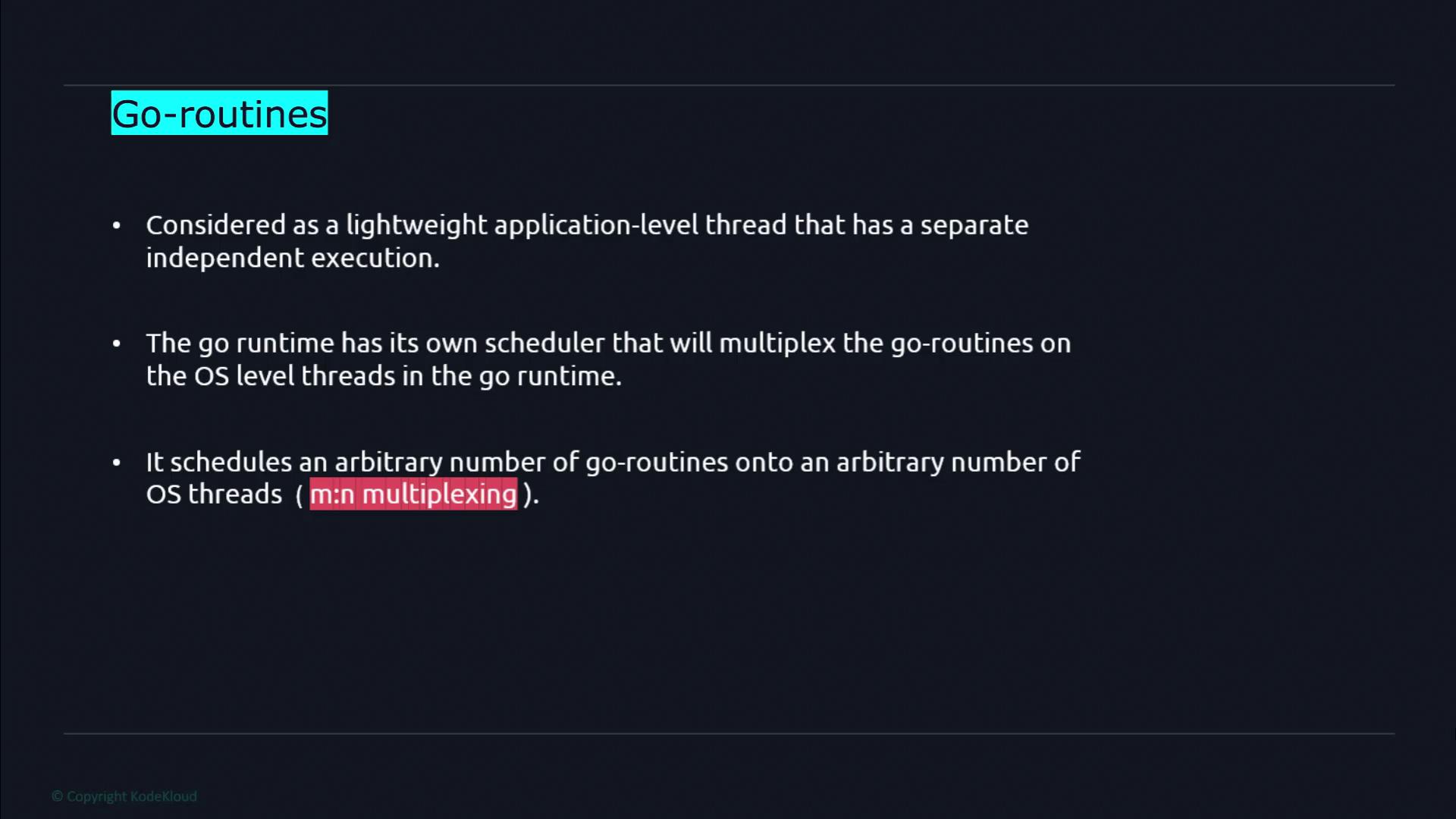
Understanding the Go Runtime Scheduler
The operating system scheduler manages threads for each logical core. Within the Go runtime, each thread is associated with a local run queue (LRQ) that stores Goroutines designated for that specific thread. Additionally, the runtime uses a global run queue (GRQ) to hold Goroutines that have not yet been assigned to any LRQ. Periodically, the scheduler moves Goroutines from the GRQ to LRQs based on execution needs.
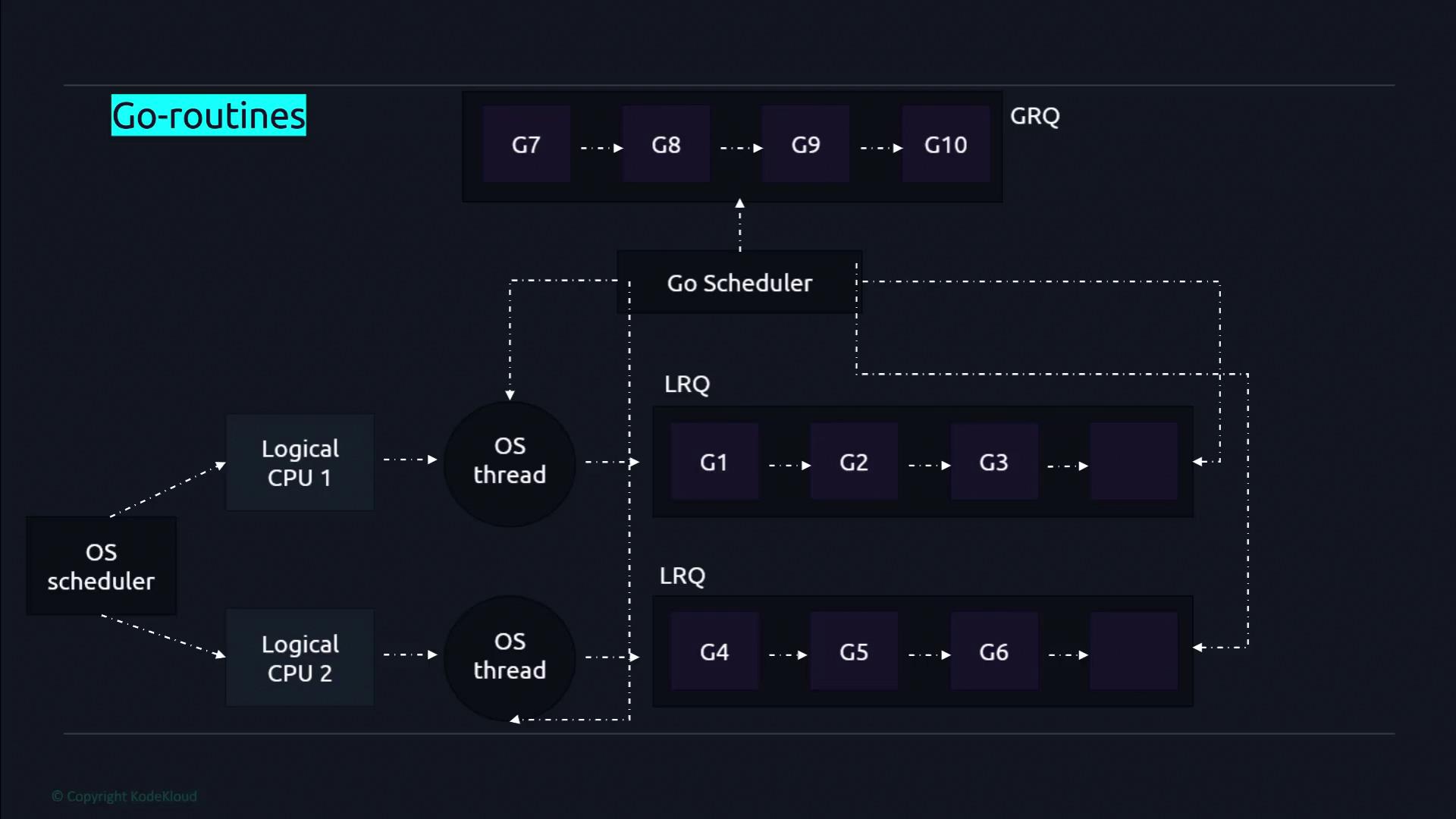
Cooperative Scheduling in Go
The Go scheduler operates on a cooperative basis, meaning it does not force preemptive context switches based on time slices. Instead, Goroutines voluntarily yield control at predefined checkpoints. For example, context switching may occur during function calls, garbage collection, network operations, or channel operations, as well as when launching new Goroutines with the go keyword.
Note
Goroutines must yield control voluntarily, which depends on checkpoints within the code such as I/O operations and function calls.

Context Switching
Context switching in Go occurs when a Goroutine makes a function call, prompting the scheduler to evaluate whether to switch execution to another Goroutine. Although the scheduler can switch contexts, it might also continue with the current Goroutine if no better candidate is available. Common triggers for a context switch include:
- Function calls
- Garbage collection
- Network operations
- Channel communications
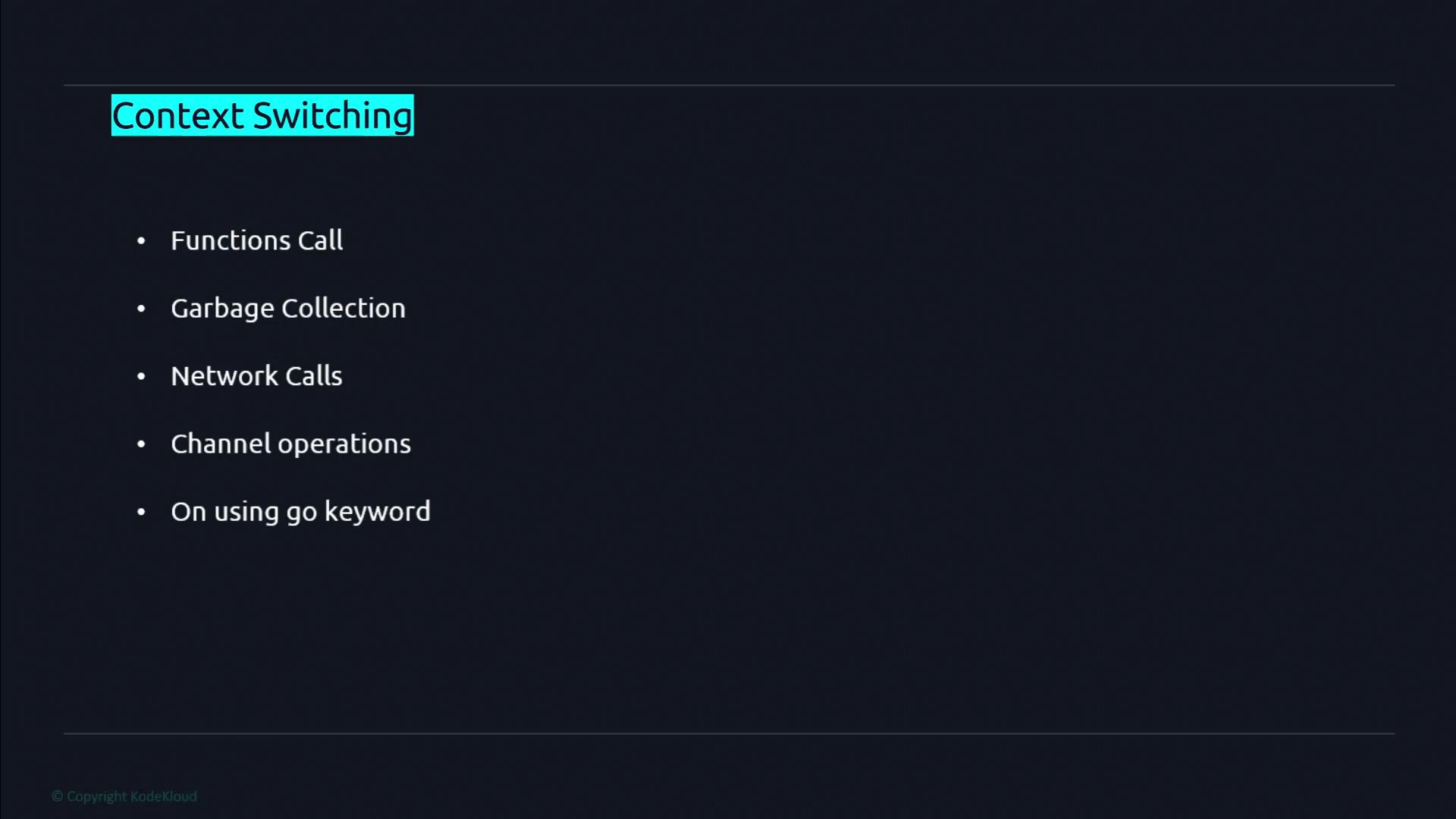
Goroutines vs. Threads
Goroutines are much lighter than traditional operating system threads. Typically, they require only a few kilobytes of stack space, which can dynamically grow or shrink as needed, whereas threads usually have a fixed stack size (e.g., one megabyte). This low overhead enables developers to spawn hundreds or even thousands of Goroutines while keeping the number of OS threads relatively low. The Go runtime’s efficient scheduling leads to faster context switches compared to the OS-level thread scheduling.
Goroutines also communicate using channels, which provide a safe mechanism to synchronize memory access and data exchange between concurrent operations.
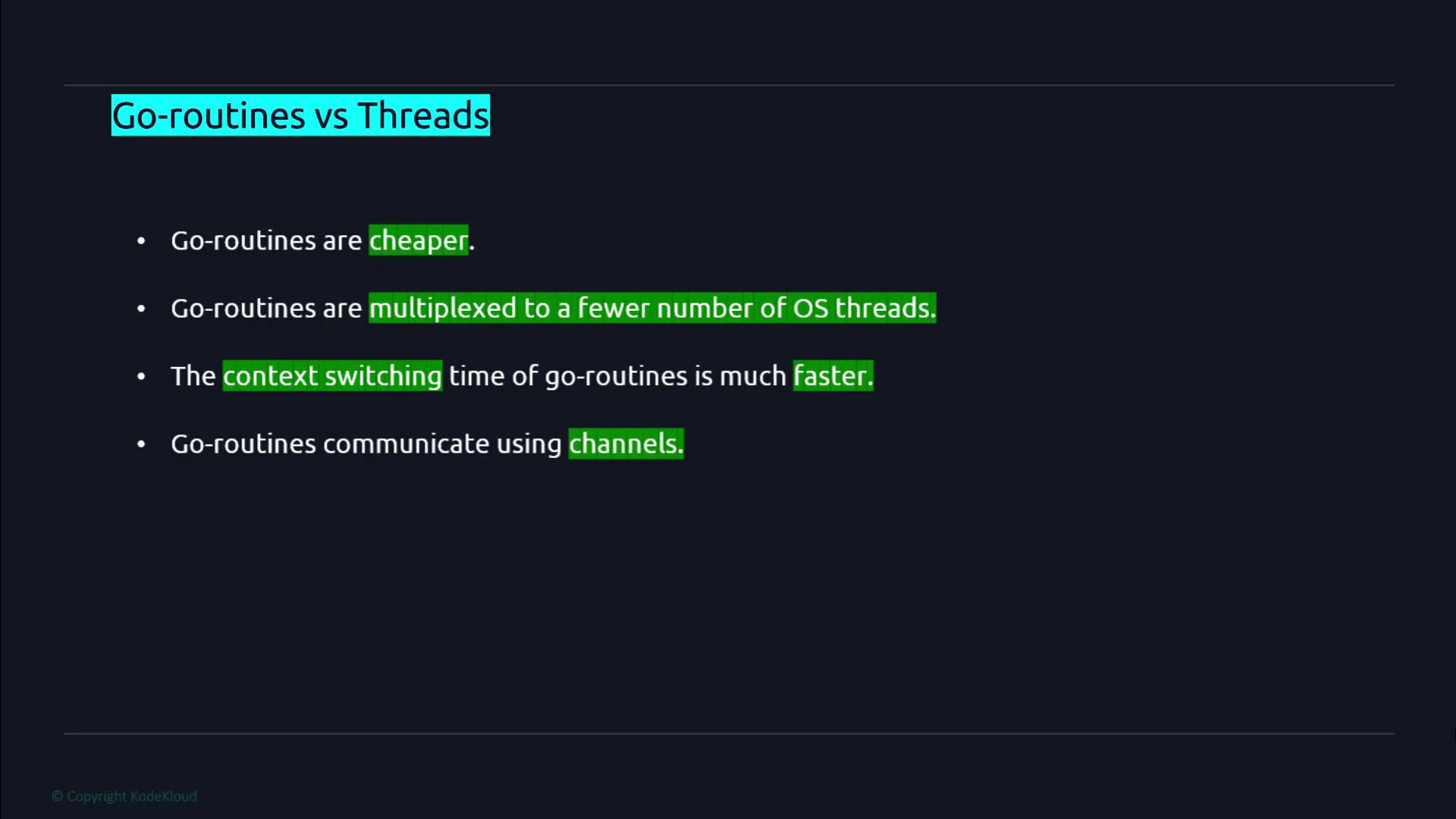
Next Steps
In upcoming lessons, we will dive deeper into channels and explore their role in managing concurrent processes with Go.
Happy coding!
Watch Video
Watch video content